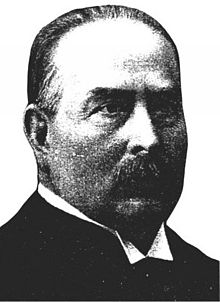Guido Goldschmiedt
Guido Goldschmiedt was an Austrian chemist. During his career, he collaborated with Bunsen in Heidelberg and Baeyer in Straburg. In 1891, he became full professor at the University of Vienna and later at the University of Prague. His most remarkable results were establishing the structure of several natural compounds including papaverine and ellagic acid.
Goldschmiedt was born in Triest, AustriaHungary. He started studying economics at the business school in Frankfurt am Main, but then started attending science lectures in other educational institutions. In 1869, he went back to Vienna, where part of his family lived, and studied chemistry at the University of Vienna. There he attended lectures of Josef Redtenbacher and Franz Clestin Schneider the most prominent chemists of the time in Vienna. In 1871, he moved to the University of Heidelberg, Germany. There he received his PhD for work with Robert Wilhelm Bunsen and his assistant Blum in the field of inorganic analytical chemistry of minerals. For a postdoctoral position, he joined the laboratory of Adolf von Baeyer at the University of Straburg. Goldschmiedt worked in the field of organic chemistry for two years, but he also studied mineralogy and crystallography with Paul Heinrich von Groth. During that time, Emil Fischer and Franz S. Exner also worked with Baeyer in Straburg. For G
Source: Wikipedia

